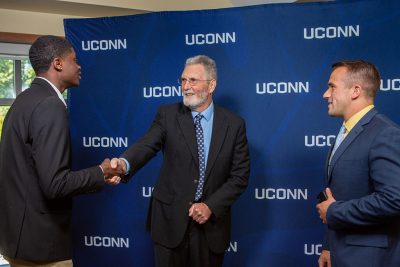
The Neag School community honored more than 150 Neag School student scholarship recipients last month at the School’s Annual Scholarship Awards Celebration, many of whom attended the celebratory luncheon in Rome Commons Ballroom with their family and friends. The student attendees had the unique opportunity to cultivate relationships with the donors whose support plays an integral part in their educational pursuits.
The scholarships are made possible by the generosity of Neag School and UConn alumni, faculty, and administrators as well as others beyond the University who are committed to helping students through their higher education journey.
The event was emceed by three-time Neag School alumnus Desi Nesmith ’01 (ED), ’02 MA, ’09 6th Year, current chief turnaround officer for the state of Connecticut, who shared his story of being the beneficiary of scholarships while at the Neag School and who now gives back to the School as a donor. Nesmith, who previously received the Neag School’s Outstanding Early Career Professional Award, has also supported the School as a past member and president of its Alumni Board.
“You don’t have to wait to give. It’s not the amount; it’s the passion, and it’s getting engaged with the University and staying engaged.”
— Sandra Hastings ’89 MA, ’94 Ph.D.
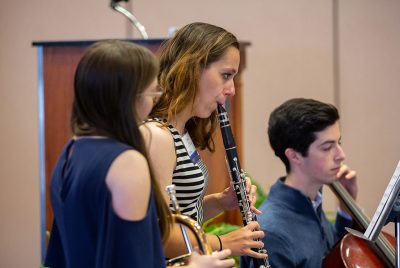
“For the students, people have made an investment in you and the best way that you can pay that forward as you begin to step into your career is not forget that,” says Desi Nesmith. “Because of folks like the donors in the room, they paid it forward for people like me. So it’s a pleasure for my wife and I to be donors and to be able to pay it forward for you because it's you who are shaping the next generation.”
The event also featured remarks from scholarship recipient Isabella “Ivy” Horan ’19 (ED), ’20 MA, a current Neag School master’s student in elementary education, who shared the top 10 things her students have taught her in her teaching experiences thus far. Among the lessons she shared were the importance of building positive relationships with students, having fun, and being yourself in the classroom.
“For students like me who are preservice teachers, you are supporting not only us, but also bettering the lives of future generations of students who will have us as teachers, too,” Horan told the scholarship donors in attendance. Her remarks were subsequently republished in the Hartford Courant.
A performance by three music education students — Jamie Bailey ’21 (ED), ’22 MA, William Mandelbaum ’21 (ED), ’22 MA, and Emily VanRyswood, ’21 (ED), ’22 MA — featured a rendition of “I See Fire” by Ed Sheeran.
Their performance was preceded by a question-and-answer conversation between Nesmith and alumna Sandra Hastings ’89 MA, ’94 Ph.D., chair of the Neag School of Education Dean’s Board of Advocates.
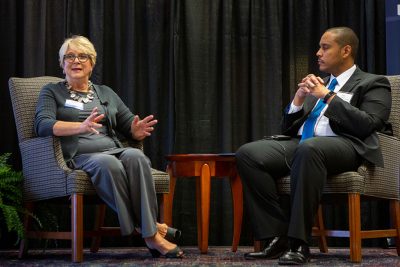
Hastings shared her journey from serving as an expert in workforce development to becoming involved in philanthropy. Her ambition to launch a collaborative philanthropic effort led her to develop a $50,000 endowment this past year that supports study abroad opportunities for Neag School students, while also giving family and friends of hers the chance to contribute to the scholarship fund.
“By leaving the door open and giving people the opportunity to give as much or as little as they could, I was able to raise $50,000 pretty quickly,” says Hastings. “I think that even if it’s $5 a year, we all can give something.”
“You don’t have to wait to give,” she added. “It’s not the amount; it’s the passion, and it’s getting engaged with the University and staying engaged.”
For Future Educators
Donors shared the following advice with Neag School students who will ultimately teach in classrooms of their own:
“Be true to yourself, be authentic, and focus on the kids.”
— Sandra Hastings, ’89 MA, ’94 Ph.D.,
Chair, Neag School Dean’s Board of Advocates
“Make sure that the classroom has fun. Keep your eye on the kids. Make sure they’re on track, but make it fun. My classroom was always a lot of fun.”
— Carla Klein ’72 (ED)
“Always continue to learn every single day so that you can turn around and teach every single day to your students. Never stop learning. Never take ‘no’ for an answer. You have in the palm of your hands the mind of the next generation.”
— Irene P. Makiaris
“Have the courage of your convictions and always try to do the right thing.”
— Francis X. Archambault ’69 MA, ’70 Ph.D.,
Professor Emeritus, Educational Psychology
“The only way we get to where we are is because we’ve had people help us and for the recipients in the room, it’s important not to forget the folks who have helped you get to this point. And for the donors, I really think it’s critical and important that you all see the outcomes of the donations that you make and the impact that you have not only across the state but ultimately across the country and the world.”
— Desi Nesmith ’01 (ED), ’02 MA, ’09 6th Year,
Chief Turnaround Officer, Connecticut State Department of Education
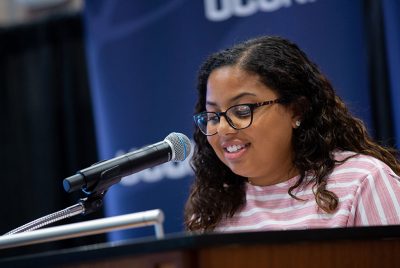
Why Give?
The theme of the awards celebration was “planting seeds,” symbolizing the ways in which scholarships plant seeds for students’ futures and allowing them to flourish in their future careers.
“These are the people that are going to be teaching the future,” says Elizabeth Degnan ’87 (CLAS), a UConn alumna who founded the Degnan Family Scholarship along with her husband, James ’87 (CLAS). “The impact we are going to have on generations to come is an honor and a privilege.”
Carla Klein ’72 (ED), a UConn alumna, retired teacher, and emeritus UConn Foundation Board Member, who established an endowment for graduate students in teacher education with her late husband, John ’71 (CLAS), ’77 JD, says her desire to give back stems from seeing her husband struggle with paying his college debt.
“I saw the way that affected him, and if I could make it easier for other people, that’s my intent,” says Klein.
Neag School professor emeritus and UConn alumnus Francis X. Archambault says a lot had been given to him throughout his life, and he felt he had a personal responsibility to give back to the University.
“I worked at UConn for many years, and I’m passionate about UConn,” says Archambault. “I think it’s a great institution, and I’m just happy to be a part of it.”
For Irene P. Makiaris, the decision to give back to the Neag School is rooted in her appreciation for education, being born to immigrant parents and her father having only received a sixth-grade education.
“When he came to the United States, he said, ‘My children are going to be educated; that’s the No. 1 thing that I want them to do,’” says Makiaris. “I feel blessed that I had the opportunity to be able to get an education, and I had parents who really pushed me.” She and her husband, alum Emanual Makiaris ’65 (CLAS), established the Irene P. and Emanuel A. Makiaris Scholarship, which supports students in teacher education.
Numerous Neag School faculty also have actively supported student scholarships. Suzanne Wilson, head of the Department of Curriculum and Instruction and Neag Endowed Professor in Teacher Education, is currently putting her own endowed fellowship into place. She says she feels lucky to work in higher education at an institution that allows her to teach and conduct important research.
“It’s important to give back to the institutions that support you along the way,” says Wilson. “It contributes to the social glue of our country and connects us to other people, to other communities, and to the organizations and communities that nurture us.”
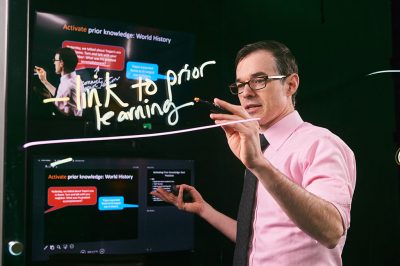
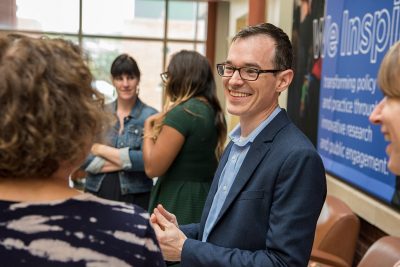
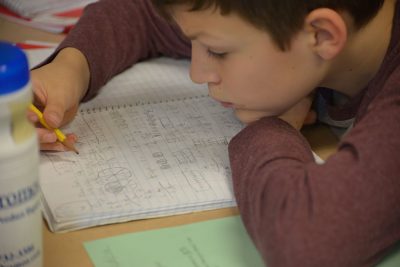

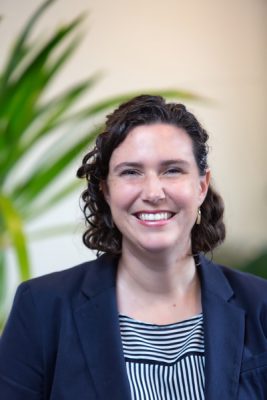

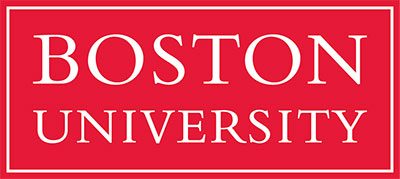 Potential applicants to the program are encouraged to seek further information about Project LINC by reaching out to the project’s faculty leaders, Bettini and Kearns. Each institution will host applicants for a recruitment weekend this spring. The project team welcome applications from professionals in education and related fields (e.g., social work, counseling, mental health) who have worked with students with disabilities in applied settings, such as schools, for at least three years. Applicants must hold a masters degree, preferably in a related field (e.g., education, special education, social work, school counseling, cognitive science).
Potential applicants to the program are encouraged to seek further information about Project LINC by reaching out to the project’s faculty leaders, Bettini and Kearns. Each institution will host applicants for a recruitment weekend this spring. The project team welcome applications from professionals in education and related fields (e.g., social work, counseling, mental health) who have worked with students with disabilities in applied settings, such as schools, for at least three years. Applicants must hold a masters degree, preferably in a related field (e.g., education, special education, social work, school counseling, cognitive science). 